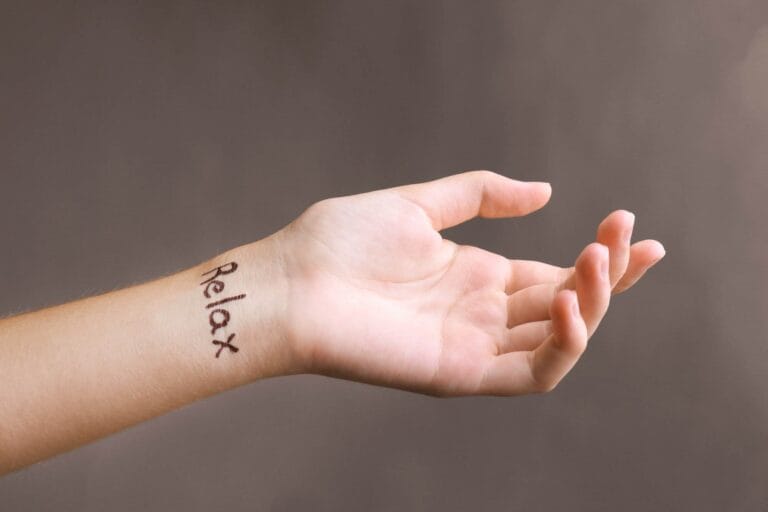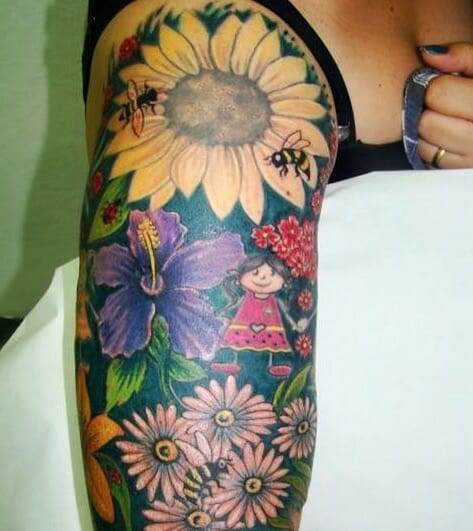
Japanese tattoos have a rich history and cultural significance that dates back centuries. These intricate and vibrant designs have become increasingly popular in the modern era, both in Japan and around the world. Japanese tattoos are known for their bold imagery, intricate details, and deep symbolism. They are often seen as a form of art and self-expression, reflecting the wearer’s personality, beliefs, and values.
A Brief History of Japanese Tattoos and Their Significance
The origins of Japanese tattoos can be traced back to ancient times. Tattoos were initially used for spiritual and decorative purposes, with designs inspired by nature, mythology, and religious beliefs. In Japanese culture, tattoos were seen as a form of protection and a way to ward off evil spirits.
During the Edo period (1603-1868), tattoos became more prevalent among the working class and criminal underworld. They were used as a form of punishment for criminals, marking them as outcasts from society. However, tattoos also gained popularity among the samurai class during this time. Samurai warriors would often adorn their bodies with elaborate tattoos to symbolize their bravery, loyalty, and honor.
The Artistry and Skill Behind Japanese Style Tattoos
Japanese tattooing is known for its meticulous attention to detail and intricate designs. Traditional Japanese tattooing techniques involve using a hand-held needle to manually insert ink into the skin. This requires a high level of skill and precision, as even the slightest mistake can ruin the entire design.
The art of Japanese tattooing is passed down through generations, with apprenticeships playing a crucial role in preserving the traditional techniques. Apprentices spend years learning from master tattoo artists, honing their skills and perfecting their craft. This dedication to craftsmanship is what sets Japanese tattoos apart from other styles.
The Influence of Japanese Culture on Western Tattooing
The introduction of Japanese tattooing to the West can be traced back to the late 19th century, when Japanese immigrants brought their tattooing traditions to the United States. These early Japanese tattoos had a significant impact on Western tattooing styles, influencing artists such as Sailor Jerry and Ed Hardy.
Japanese tattooing quickly gained popularity in the West, with many people drawn to the bold imagery and rich symbolism. Today, Japanese-style tattoos are widely recognized and appreciated in the Western tattooing community. They have become a staple in contemporary tattoo culture, with many artists incorporating Japanese motifs and techniques into their work.
The Popularity of Japanese Tattoos in the Modern Era
In recent years, Japanese tattoos have experienced a resurgence in popularity, both in Japan and around the world. This can be attributed to several factors, including the rise of social media and the increased accessibility of tattooing.
Social media platforms such as Instagram have played a significant role in popularizing Japanese tattoos. Tattoo artists can now showcase their work to a global audience, allowing people from all over the world to appreciate and be inspired by Japanese tattooing.
The appeal of Japanese tattoos lies in their timeless beauty and deep symbolism. The intricate designs and vibrant colors make for visually stunning tattoos that stand out from other styles. Additionally, the cultural significance behind Japanese tattoos adds an extra layer of meaning for those who choose to get inked.
The Symbolism and Meaning Behind Traditional Japanese Tattoo Designs

Traditional Japanese tattoo designs are filled with symbolism and meaning. Each motif has its own significance, often drawing inspiration from nature, mythology, and historical events.
One popular motif in Japanese tattoos is the koi fish, which symbolizes strength, perseverance, and determination. The cherry blossom is another common design, representing beauty, transience, and the fleeting nature of life. Dragons are often depicted in Japanese tattoos as well, symbolizing power, wisdom, and protection.
These symbols are not just decorative elements; they carry deep cultural significance that resonates with both the wearer and the viewer. Japanese tattoo designs are often chosen based on personal beliefs, values, and experiences, making them highly personalized and meaningful.
The Role of Japanese Tattooing in Yakuza Culture
Japanese tattooing has long been associated with the yakuza, a notorious criminal organization in Japan. Yakuza members traditionally sport full-body tattoos, known as irezumi, as a sign of their loyalty and commitment to the group.
Yakuza tattoos are highly symbolic and often depict traditional Japanese motifs such as dragons, tigers, and koi fish. These tattoos serve as a form of identification within the yakuza hierarchy, with each design representing a specific rank or achievement.
However, in recent years, the practice of yakuza tattooing has declined due to increased government regulations and crackdowns on organized crime. Many yakuza members have chosen to remove their tattoos or cover them up to avoid detection by law enforcement.
The Evolution of Japanese Tattooing Techniques and Styles
While traditional Japanese tattooing techniques have remained largely unchanged for centuries, there has been a recent emergence of new techniques and styles in Japanese tattooing.
One such technique is tebori, which involves using a hand-held needle to manually insert ink into the skin. This technique requires a high level of skill and precision, as the artist must control the depth and angle of each needle stroke.
In terms of styles, there has been a fusion of traditional and modern elements in Japanese tattooing. Artists are now incorporating contemporary elements such as geometric patterns, watercolor effects, and abstract designs into their work. This blending of styles allows for greater creativity and innovation within the realm of Japanese tattooing.
The Global Appeal of Japanese Tattooing and Its Cultural Significance
Japanese tattooing has transcended its cultural origins and gained popularity around the world. The cultural significance behind Japanese tattoos resonates with people from different backgrounds and cultures, making it a universal form of self-expression.
Japanese tattooing has also had a significant impact on global tattoo culture. Many artists from different countries have been inspired by Japanese tattooing techniques and motifs, incorporating them into their own work. This cross-cultural exchange has led to the development of new styles and techniques within the tattoo industry.
Furthermore, Japanese tattooing has influenced contemporary art and design. The bold imagery and intricate details of Japanese tattoos have been incorporated into various art forms, including paintings, sculptures, and fashion design. This fusion of traditional and modern elements has created a unique aesthetic that is highly sought after in the art world.
Japanese Tattooing in Contemporary Fashion and Pop Culture
Japanese tattooing has had a significant influence on fashion and pop culture. The bold and vibrant designs of Japanese tattoos have been embraced by fashion designers, who incorporate them into their collections. Japanese tattoo motifs can be seen on clothing, accessories, and even footwear.
Japanese tattooing has also become popular within streetwear and fashion subcultures. Many streetwear brands feature Japanese-inspired designs, often incorporating traditional motifs such as dragons, tigers, and cherry blossoms. These designs have become iconic symbols within these subcultures, representing individuality, rebellion, and self-expression.
The Future of Japanese Style Tattoos and Their Impact on the Tattoo Industry
The future of Japanese tattooing looks promising in a globalized world. As more people become interested in tattoos as a form of self-expression, the demand for Japanese-style tattoos is likely to continue to grow.
Japanese tattooing has already had a significant impact on the tattoo industry, inspiring artists around the world to incorporate Japanese motifs and techniques into their work. This cross-pollination of styles has led to the development of new innovations in tattooing.
In terms of future innovations, advancements in technology may play a role in the evolution of Japanese tattooing techniques. For example, the use of tattoo machines and digital tools may become more prevalent, allowing artists to create more intricate and detailed designs.
Japanese tattoos have a rich history and cultural significance that continues to resonate with people around the world. The artistry and skill behind Japanese tattooing, as well as the deep symbolism and meaning behind traditional designs, make them highly sought after by tattoo enthusiasts.
Japanese tattooing has had a significant impact on the tattoo industry, inspiring artists to push the boundaries of their craft. The fusion of traditional and modern elements in Japanese tattooing has also influenced contemporary art and design.
As we look to the future, Japanese tattooing is likely to continue to evolve and innovate, while still maintaining its cultural roots. The global appeal of Japanese tattoos and their impact on popular culture will ensure that they remain a timeless form of self-expression for years to come.
If you’re interested in Japanese style tattoos, you might also enjoy reading about the global influence and popularity of this art form. Check out this fascinating article from Redemption Ink: Exploring the Global Influence and Popularity of Japanese Style Tattoos. It delves into the history, symbolism, and cultural significance of these tattoos, as well as their growing popularity around the world.






